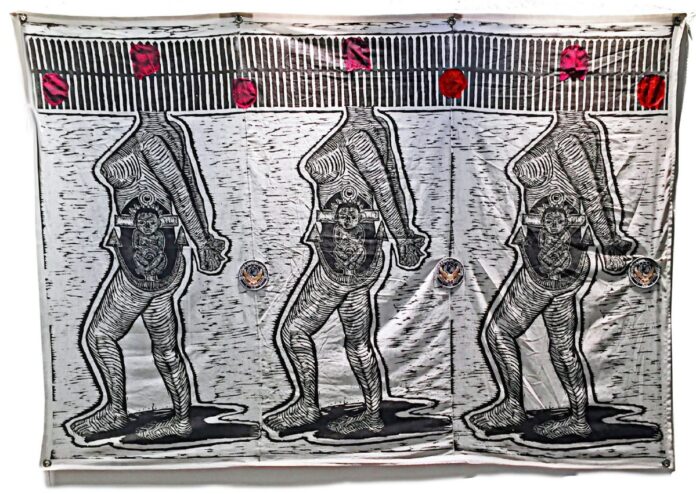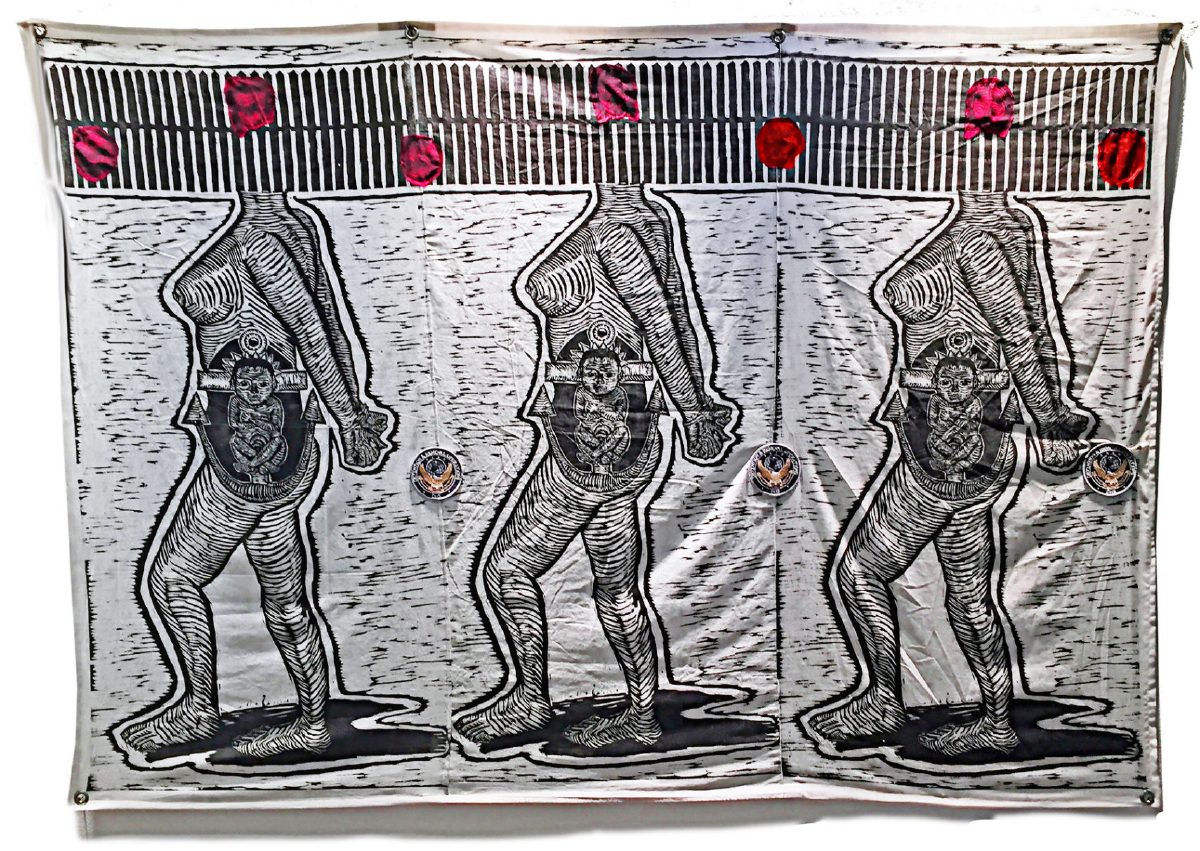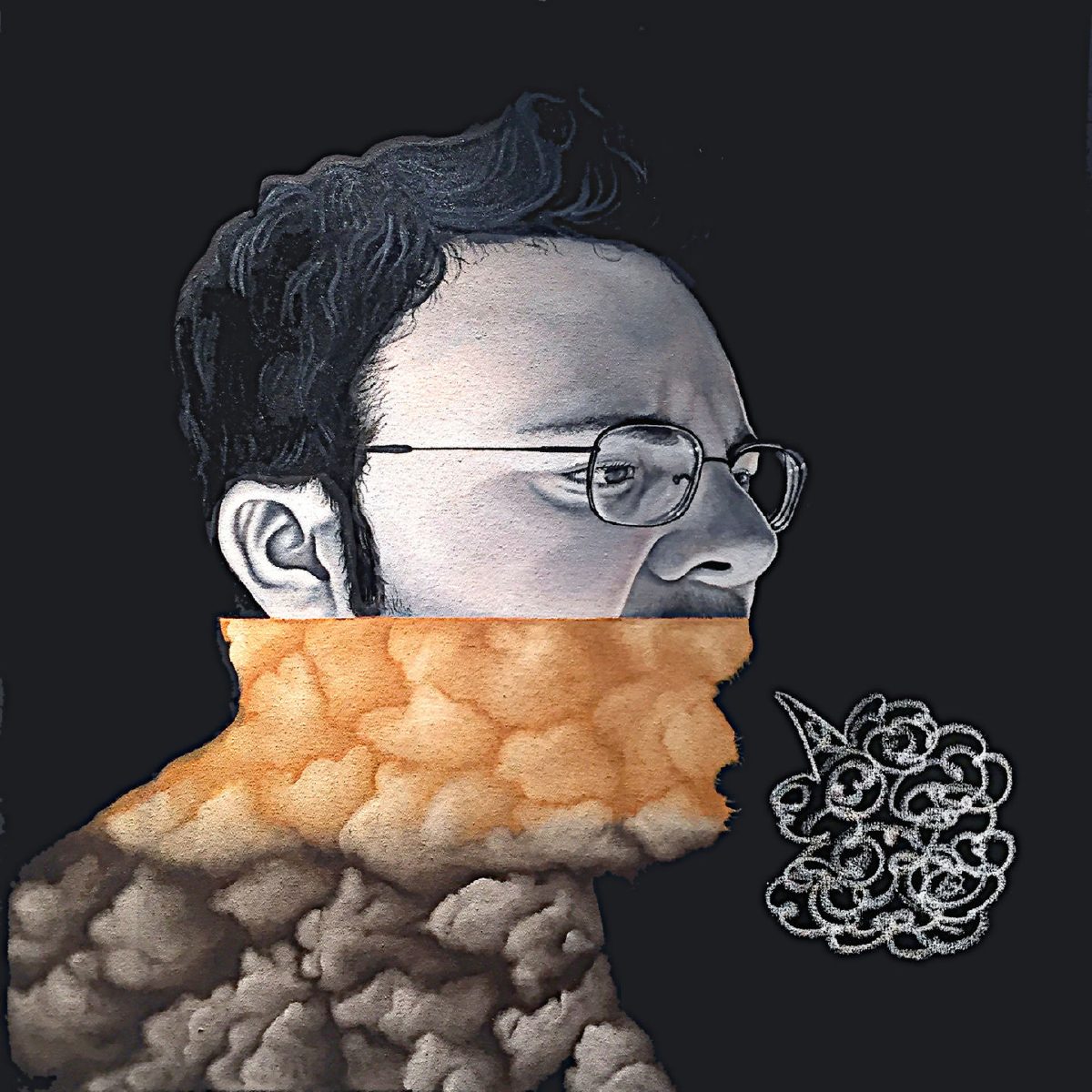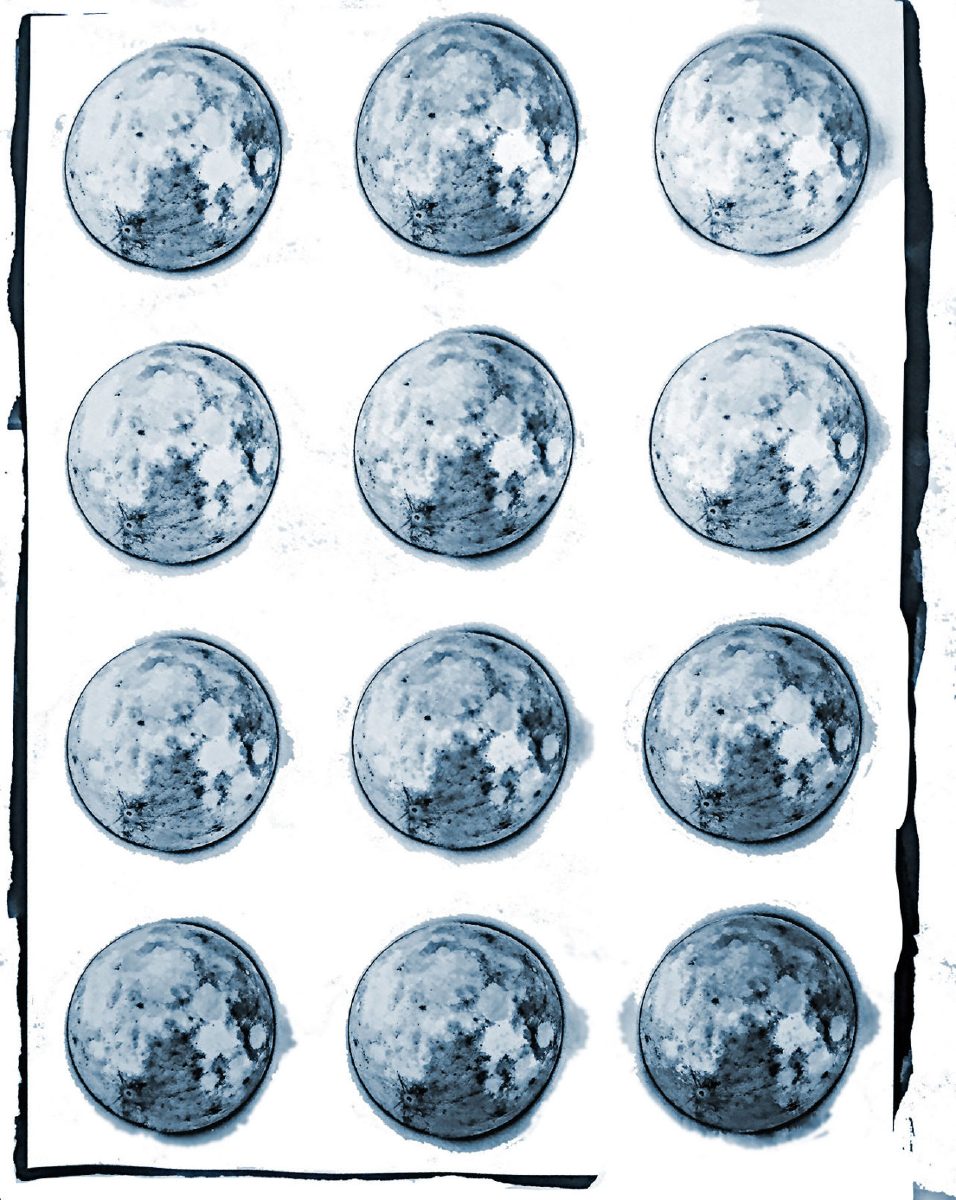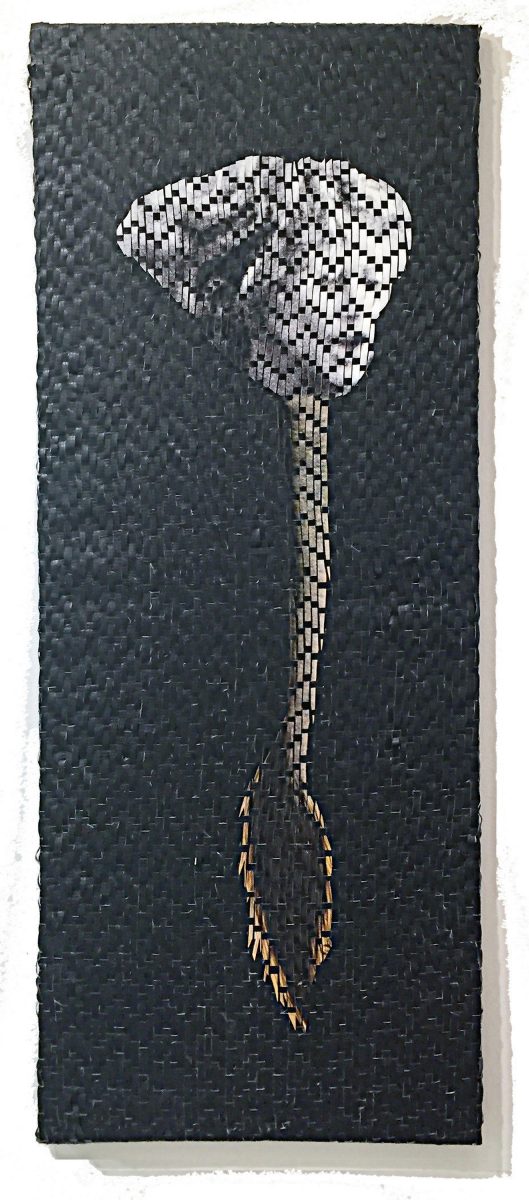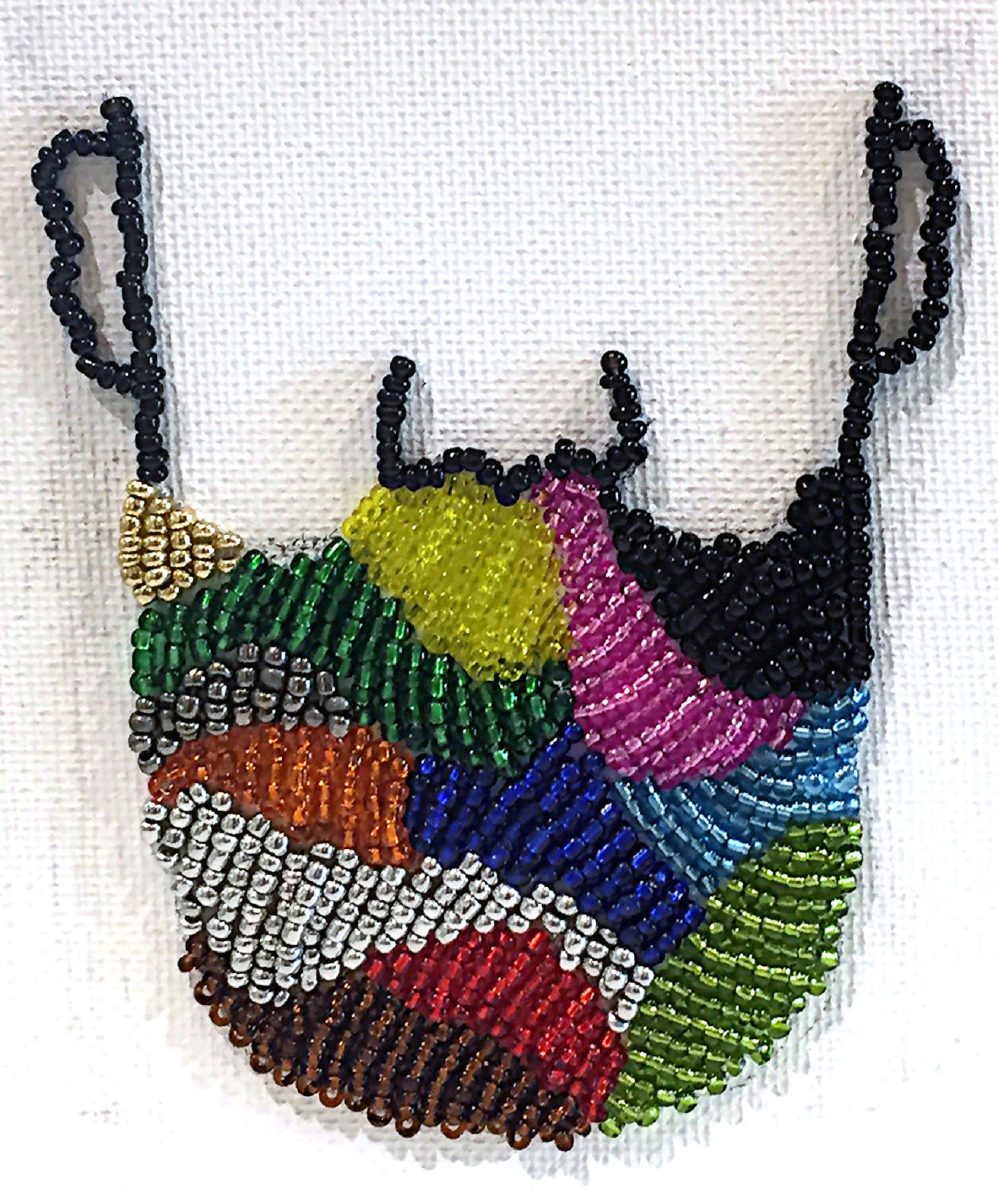BY NANCY MOYER
Over the years, art has been identified as a major indicator in understanding the social ethos of epochs, countries, and even political regimes. Through the eyes of artists, we have been able to discover the unofficial habits of historical communities. Sometimes this information harmonizes with a known stance; other times, we see the voice of dissent — an underlying mood of unrest, which reveals itself in the “UTRGV School of Art Faculty Exhibition.”
Located in the Clark Gallery on the Edinburg campus, this very interesting exhibition of works reads as a single installation about the current personal states of mind of the teaching faculty. Most of the full-time art faculty and adjuncts are participating with clay, conceptual art, installation, painting, sculpture, printmaking, prints, photography and graphic design. This exhibition is a fascinating expression of individual concerns.
Contemporary artists commonly react to personal and social issues by using them as subjects, such as we see in Celeste de Luna’s bold woodcut print, “Woman Fence.” But it is not common to see undercurrents of the social climate, the uncertainty, divisiveness and anger exposed as an incidental exhibition pattern.
The exhibition presents works that are informed by issues deeply and emotionally felt, needing overt expression. Anger flares in M.C. Farris’s image on wood, “No Concerns for Sheep,” portraying the classic predator — a wolf whose teeth drip with the blood of innocent prey. With hostility to spare, De Luna’s “Woman Fence” is a scathing indictment of immigration law, and although Donna Swiegart and Tom Murray’s collaboration, “Chankla ‘Homage to Mark Clouet,’” is presented as a sentimental and amusing concept, cement footwear has a negative and restrictive feeling.
A sizeable and potentially 3-D painting submitted by Rey Santiago, bursts with violent color contrasts. His artwork hangs in a curiously modest space. The viewer must leave the gallery and view the painting from outside the glass wall in order to appreciate it.
Murray’s dominantly white “Untitled” painting of a lone nude enjoys open spaces. The background painted over with a cold white paint is slowly transforming her into stone, Murray says that his subject reacts with indifference at the obliteration of her world. Yet, her subtle expression may suggest more.
And with Douglas Clark’s sculpture, “Why are Ships Called SHE?”, a female form is transformed into a sailing vessel; translucent resin torso shapes, possibly serving as sails, appear as ghostly apparitions attempting to leave the empty husk beneath them, but yellow cords reminiscent of crude sutures at once support and restrain them.
Stepping away from the angst, Alex Macias provides emotional respite with his personally relatable painting, “Coffee is My Morning Ritual,” and Jing Zhang offers “Beard Flows,” a tiny and whimsical beaded piece suggesting the care and perceived preciousness of men’s beards.
Scattered throughout the rest of the show are works reflecting detachment, folding in on themselves rather than projecting outward. There is minimal experimental play or exploration of materials or forms, but what this exhibition does offer is sincere visual communication from the depths of its artists.
Nancy Moyer, professor emerita of Art, UTRGV, is an art critic for The Monitor. She may be reached at [email protected].

